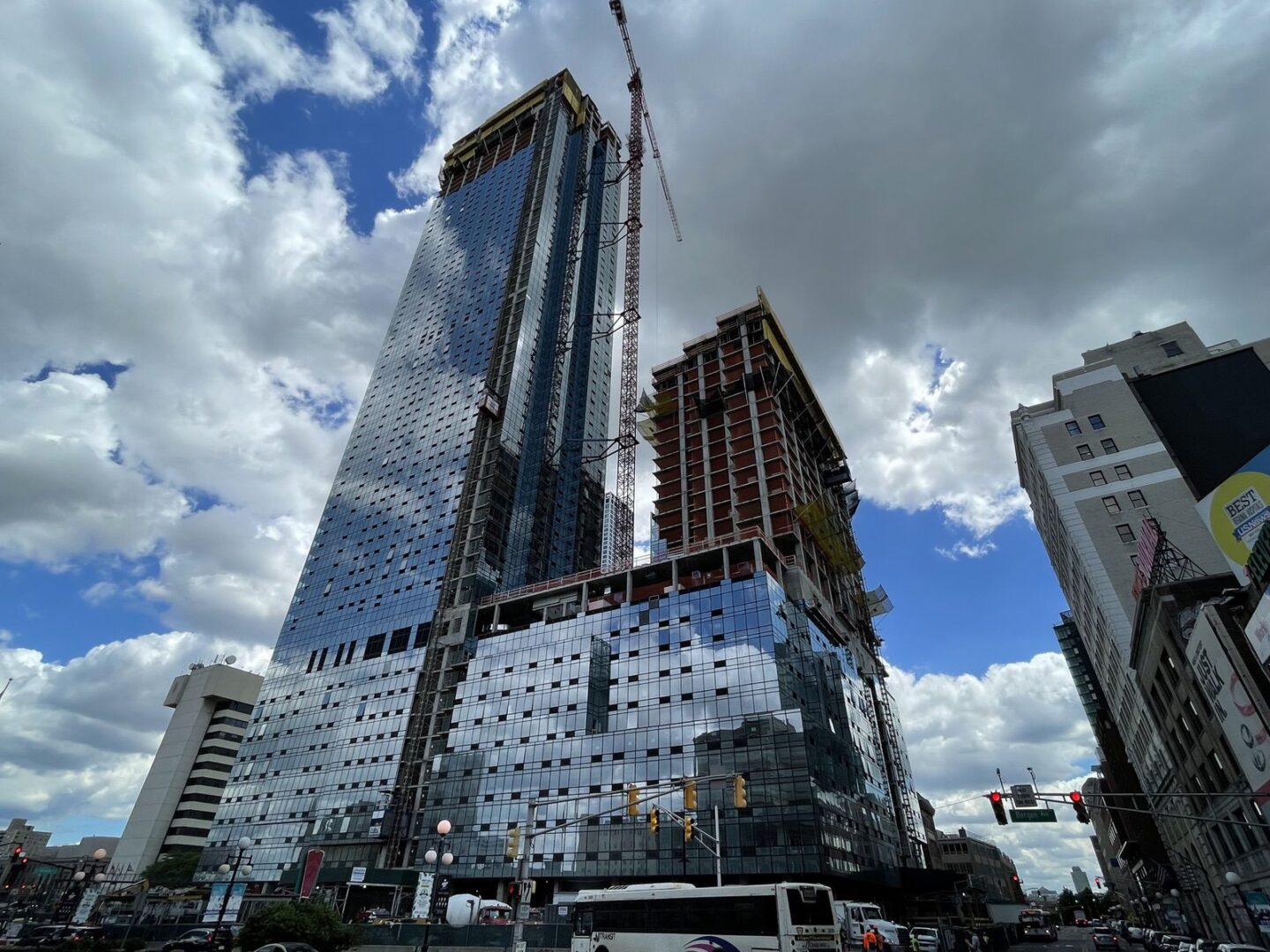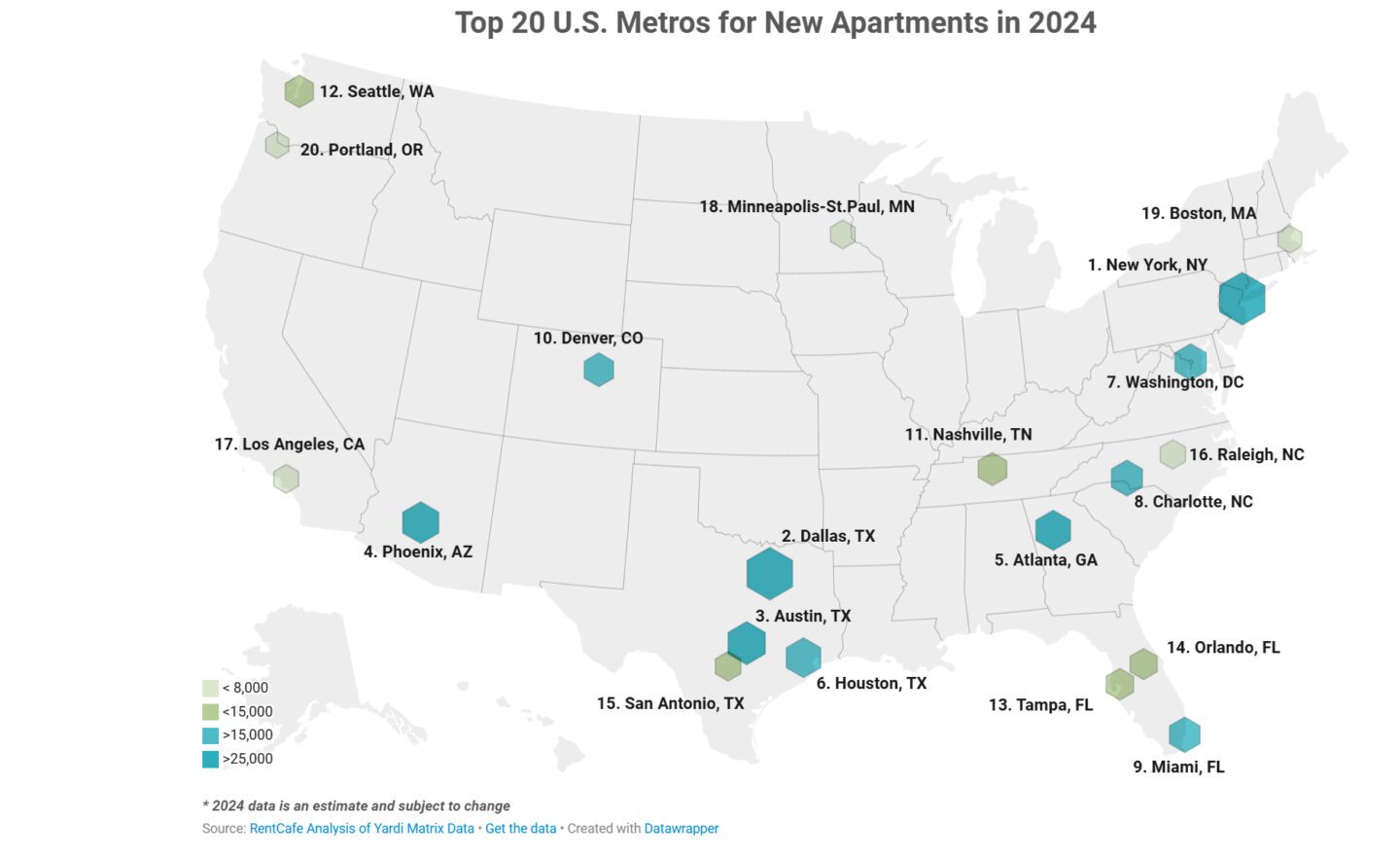
While few observers would doubt the tremendous growth of Jersey City in recent years, a recent analysis demonstrates that the number of new residents being added in 2024 will once again be on par with Manhattan’s additions.
RentCafe recently released a study gauging the growth nationwide of American cities in terms of apartments being added. The company found the New York metro to be the nation’s top construction powerhouse, as the area is set to deliver a staggering 32,935 units this year.

The top spot in terms of added apartments is the sprawling borough of Brooklyn, which will add a total of 9,379 new homes. Manhattan came in second place for 2024, as 2,979 new units are expected to hit the market.
Just a tick behind is Jersey City, which was determined to be adding 2,412 units this year. That number arguably represents a bit of a downgrade for the biggest spot in Hudson County, as Jersey City has more than occasionally created more housing units than Manhattan in recent years and is the state’s fastest-growing city in the New Jersey’s fastest-growing county per the 2020 census.

The total number of apartments being added this year by Jersey City is twice as many than are being built in Queens, which encompasses a significantly larger geographic area.
In the longer term, Jersey City is projected to add 12,276 new units by 2028 based on approvals and construction that is currently underway. That number reflects a 17.7% increase compared to the same construction and approval numbers spanning from 2018-2023.
Other notable stops in the Garden State that are adding significant residences this year include Parsippany, Hackensack, Newark, Passaic, and Elizabeth. Overall, New Jersey’s growing towns made up half of the New York metro list.
RentCare’s study determined that the New York metro leads the way in terms of new housing construction, planning to bring to the market 150,327 units through 2028. This year will also be the first in the history of U.S. apartment construction in which the number of completions will surpass the 500,000-unit threshold.


